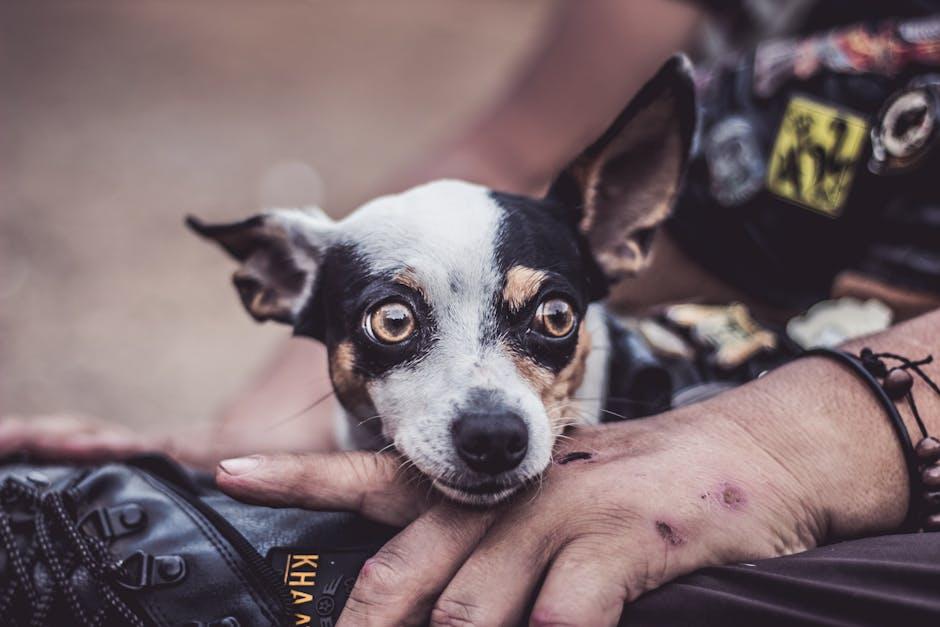Do Pets Understand Human Emotions More Than We Realize

In the cozy corners of our homes, where wagging tails and gentle purrs are a common sight, a curious question lingers: Do our beloved pets understand us more deeply than we realize? As any pet owner can attest, there are moments when a dog seems to know just when to offer a comforting nuzzle or a cat curls up beside us during times of stress. These seemingly intuitive acts spark a fascinating exploration into the emotional connection between humans and their furry companions. This article delves into the science and stories behind our pets’ ability to perceive and respond to human emotions, revealing a bond that may be more profound and complex than we have ever imagined. Whether you’re a lifelong pet lover or simply curious about the intricacies of animal behavior, join us as we uncover the mysteries of this extraordinary interspecies understanding.
Understanding the Emotional Bond Between Humans and Pets
It’s fascinating how pets often seem to have an uncanny ability to perceive their owners’ emotions. This connection goes beyond the simple routine of feeding and walking. Pets, particularly dogs and cats, are known to respond to human emotions in ways that suggest a deeper understanding. They might cuddle up to you when you’re feeling down or become more playful when you’re joyful. Such behaviors hint at an emotional intelligence that allows them to pick up on subtle cues, whether it’s the tone of your voice or your body language.
- Empathy: Many pets exhibit empathetic behavior, offering comfort when they sense sadness or stress.
- Observational Skills: Their ability to read facial expressions and body language is often underestimated.
- Routine Sensitivity: Pets are creatures of habit and can detect changes in your routine, which often reflect shifts in your emotional state.
While scientific research continues to explore this remarkable bond, countless pet owners can attest to the soothing presence of their furry friends during tough times. It seems that the emotional connection between humans and their pets is a blend of instinct, learned behavior, and genuine affection, creating a bond that is both profound and rewarding.

Exploring Scientific Studies on Pets Emotional Perception
Recent studies have delved into the fascinating world of pet behavior, revealing that our furry companions might be more attuned to our emotions than we previously thought. Researchers have explored various dimensions of this phenomenon, including how pets react to human facial expressions, voice tones, and even body language. Dogs, for instance, have shown a remarkable ability to discern between happy and angry human faces, often responding with corresponding behaviors. Cats, on the other hand, might seem aloof, but they too exhibit sensitivity to their owners’ emotional states, often providing comfort through purring or close proximity during times of distress.
- Dogs: Known for their loyalty, they can recognize and react to human emotions, often mirroring their owner’s mood.
- Cats: While often perceived as independent, studies suggest they can pick up on emotional cues, responding with affection or attention.
- Birds: Some species, like parrots, can sense emotional changes, sometimes mimicking comforting sounds.
The implications of these findings extend beyond just understanding pet behavior. They open up possibilities for using pets in therapeutic settings, leveraging their emotional perception to support human mental health. As we continue to uncover the depths of this interspecies emotional connection, it becomes increasingly clear that pets might indeed perceive and respond to our feelings more profoundly than we have ever realized.

Practical Tips for Enhancing Emotional Communication with Your Pet
Building a deeper emotional connection with your pet can be a rewarding journey. Here are some practical tips to enhance this unique bond:
- Observe Body Language: Pay attention to your pet’s body language to understand their emotions better. For instance, a wagging tail or purring can indicate happiness, while a tucked tail or flattened ears might suggest anxiety.
- Use Consistent Cues: Establish a set of verbal and non-verbal cues for communication. Consistency in tone and gestures helps pets associate specific actions with emotions.
- Engage in Play: Regular playtime is not just fun; it’s a way to express affection and understand your pet’s emotional needs. Choose activities that your pet enjoys to strengthen your connection.
- Practice Active Listening: Listen to your pet’s vocalizations. Different sounds can convey various emotions, from excitement to discomfort. Acknowledge these sounds with positive reinforcement or soothing words.
By applying these techniques, you’ll not only improve communication but also deepen the trust and affection between you and your pet, revealing just how much they truly understand and respond to your emotions.

Real-Life Stories: Pets Responding to Human Emotions
- Luna and Her Empathetic Paws: When Sarah lost her job, she was overwhelmed with anxiety and uncertainty. Her cat, Luna, seemed to sense the shift in mood immediately. Instead of her usual playful antics, Luna became a constant companion, curling up on Sarah’s lap whenever she sat down. It was as if Luna knew her presence was a comfort, offering a gentle purr and warmth that words couldn’t convey. This change in behavior helped Sarah find solace during a difficult time, reminding her that she wasn’t alone in her struggles.
- Max, the Compassionate Canine: Jake, a teenager navigating the challenges of high school, often felt isolated. His dog, Max, however, was always there to lend an ear—or rather, a paw. On particularly tough days, Max would rest his head on Jake’s knee, looking up with soulful eyes that seemed to understand every unspoken word. Max’s unwavering loyalty and gentle nudges encouraged Jake to express his feelings, acting as a silent yet powerful reminder that understanding and support can come from the most unexpected sources.



